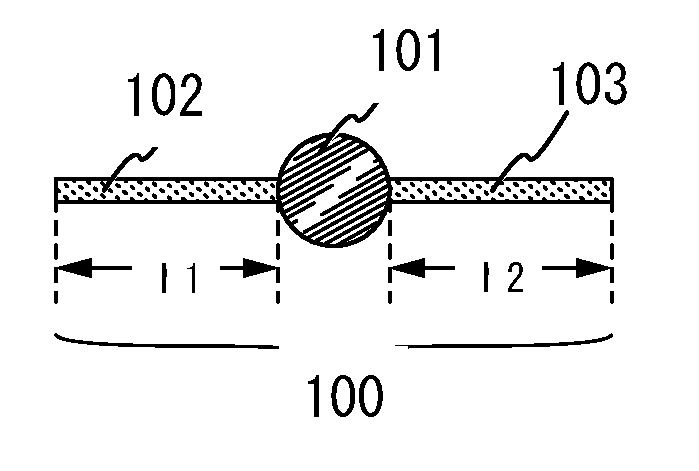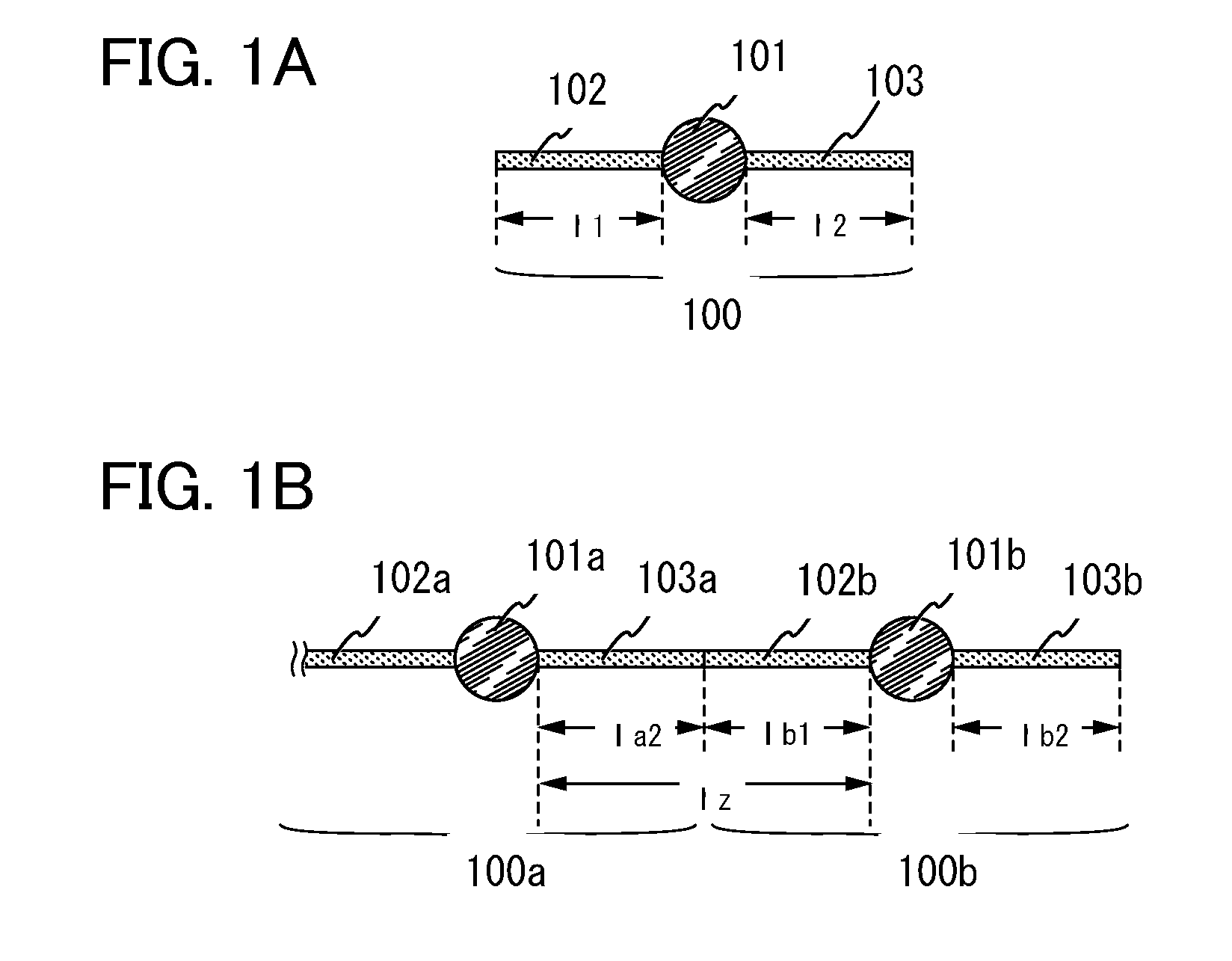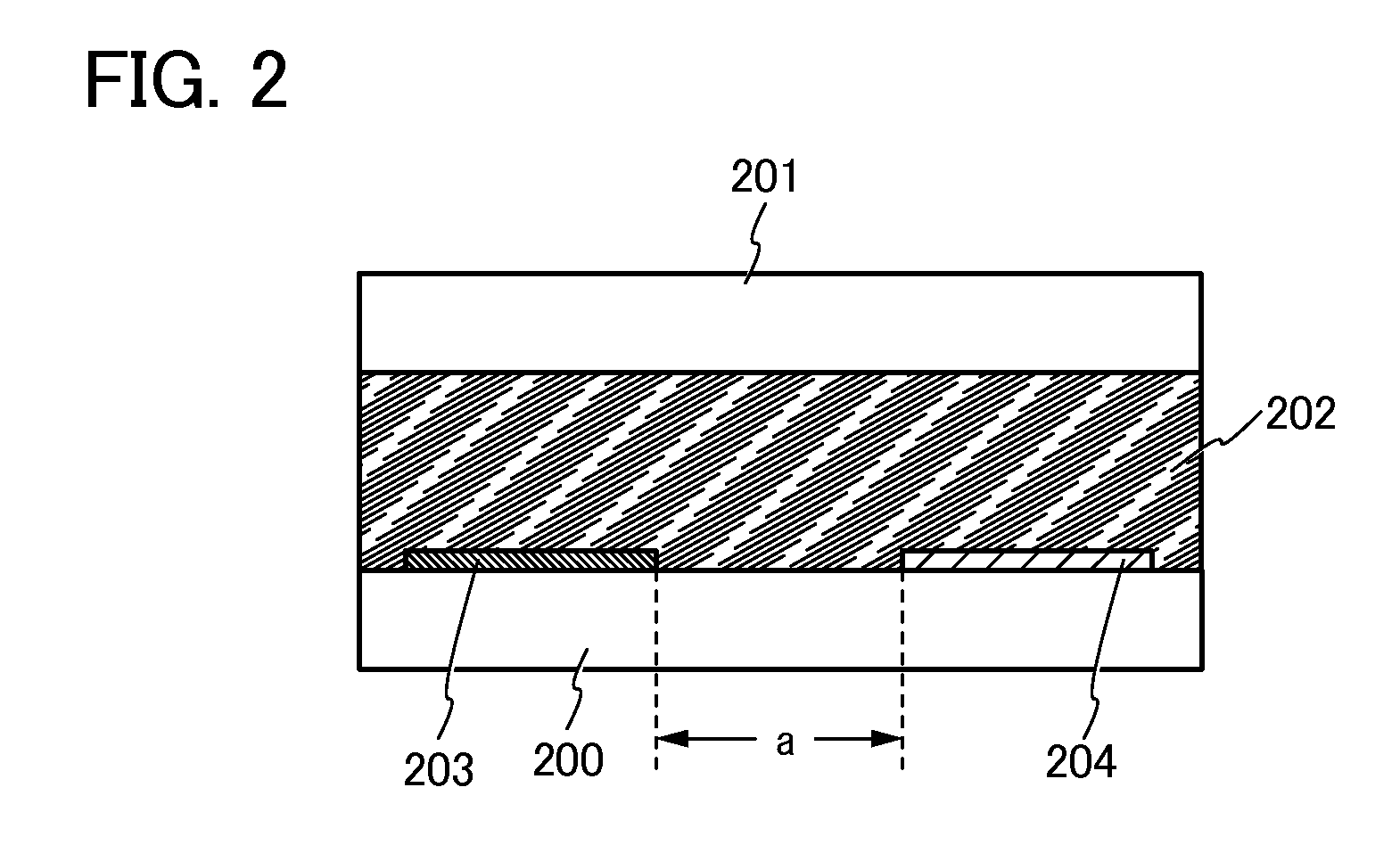Liquid crystal composition, polymer/liquid crystal composite, liquid crystal element, and liquid crystal display device
- Summary
- Abstract
- Description
- Claims
- Application Information
AI Technical Summary
Benefits of technology
Problems solved by technology
Method used
Image
Examples
embodiment 1
[0045]In this embodiment, a liquid crystal composition exhibiting a blue phase, and a polymer / liquid crystal composite obtained by polymer stabilization treatment (polymerization treatment) of the liquid crystal composition are described.
[0046]The liquid crystal composition described in this embodiment includes a liquid crystal material exhibiting a blue phase, a liquid crystalline monomer, a non-liquid-crystalline monomer, and a polymerization initiator.
[0047]The liquid crystal material exhibiting a blue phase refers to a liquid crystal material capable of exhibiting a so-called blue phase that substantially does not scatter light and is optically isotropic. As the liquid crystal material exhibiting a blue phase contained in the liquid crystal composition, there are a nematic liquid crystal compound and a smectic liquid crystal compound, and the nematic liquid crystal compound is preferred. Note that the nematic liquid crystal compound is not particularly limited, and examples ther...
embodiment 2
[0085]In this embodiment, an example of a liquid crystal element using the polymer / liquid crystal composite that is obtained by polymerization of the liquid crystal composition described in Embodiment 1 is described with reference to FIG. 2. FIG. 2 is a cross-sectional view of the liquid crystal element.
[0086]In FIG. 2, a liquid crystal layer 202 is formed between a first substrate 200 and a second substrate 201. The polymer / liquid crystal composite described in Embodiment 1 is used for the liquid crystal layer 202. A pixel electrode layer 203 and a common electrode layer 204 are adjacently formed over the first substrate 200.
[0087]A method in which grayscale is controlled by generating an electric field which is substantially parallel to a substrate (i.e., in a horizontal direction) to move liquid crystal molecules substantially parallel to the substrate (i.e., in a horizontal direction) is applied to the liquid crystal element of this embodiment.
[0088]Note that the a distance α (s...
embodiment 3
[0096]In this embodiment, a liquid crystal display device in which the liquid crystal composition that is one embodiment of the present invention is used for a liquid crystal layer is described. Note that the liquid crystal display device of this embodiment includes the liquid crystal element (also referred to as a liquid crystal display element) described in Embodiment 2 as a display element. The liquid crystal display device may be a passive-matrix liquid crystal display device or an active-matrix liquid crystal display device, and in this embodiment, the case where the liquid crystal element is applied to an active matrix liquid crystal display device is described with reference to FIGS. 3A and 3B.
[0097]FIG. 3A is a plan view of a liquid crystal display device and illustrates one pixel thereof. FIG. 3B is a cross-sectional view taken along X1-X2 in FIG. 3A.
[0098]In FIG. 3A, a plurality of source wiring layers 305 (including a wiring layer 305a) is provided in parallel to each oth...
PUM
| Property | Measurement | Unit |
|---|---|---|
| Fraction | aaaaa | aaaaa |
| Fraction | aaaaa | aaaaa |
| Fraction | aaaaa | aaaaa |
Abstract
Description
Claims
Application Information
 Login to View More
Login to View More - R&D
- Intellectual Property
- Life Sciences
- Materials
- Tech Scout
- Unparalleled Data Quality
- Higher Quality Content
- 60% Fewer Hallucinations
Browse by: Latest US Patents, China's latest patents, Technical Efficacy Thesaurus, Application Domain, Technology Topic, Popular Technical Reports.
© 2025 PatSnap. All rights reserved.Legal|Privacy policy|Modern Slavery Act Transparency Statement|Sitemap|About US| Contact US: help@patsnap.com



